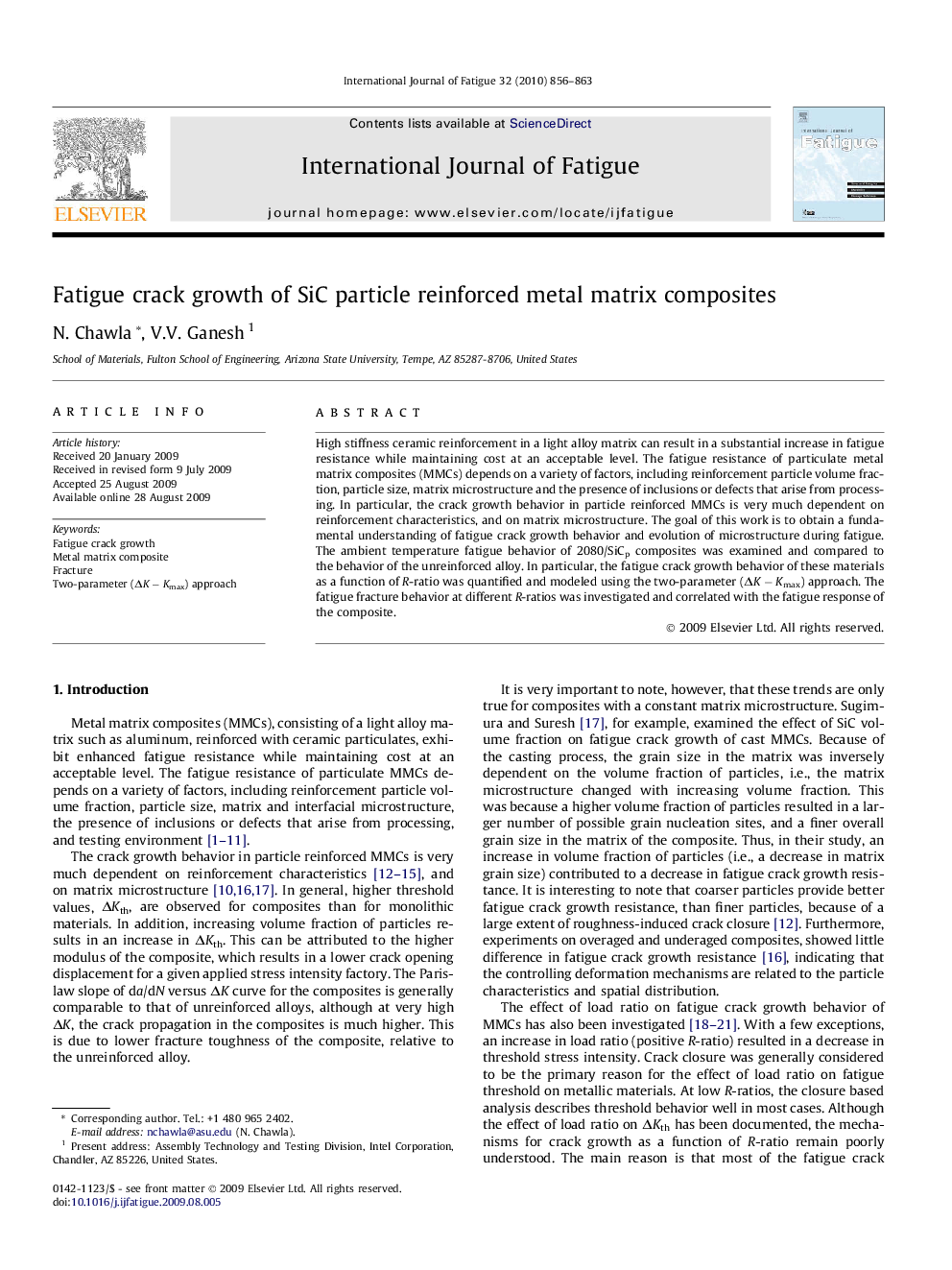| Article ID | Journal | Published Year | Pages | File Type |
|---|---|---|---|---|
| 775567 | International Journal of Fatigue | 2010 | 8 Pages |
High stiffness ceramic reinforcement in a light alloy matrix can result in a substantial increase in fatigue resistance while maintaining cost at an acceptable level. The fatigue resistance of particulate metal matrix composites (MMCs) depends on a variety of factors, including reinforcement particle volume fraction, particle size, matrix microstructure and the presence of inclusions or defects that arise from processing. In particular, the crack growth behavior in particle reinforced MMCs is very much dependent on reinforcement characteristics, and on matrix microstructure. The goal of this work is to obtain a fundamental understanding of fatigue crack growth behavior and evolution of microstructure during fatigue. The ambient temperature fatigue behavior of 2080/SiCp composites was examined and compared to the behavior of the unreinforced alloy. In particular, the fatigue crack growth behavior of these materials as a function of R-ratio was quantified and modeled using the two-parameter (ΔK − Kmax) approach. The fatigue fracture behavior at different R-ratios was investigated and correlated with the fatigue response of the composite.
